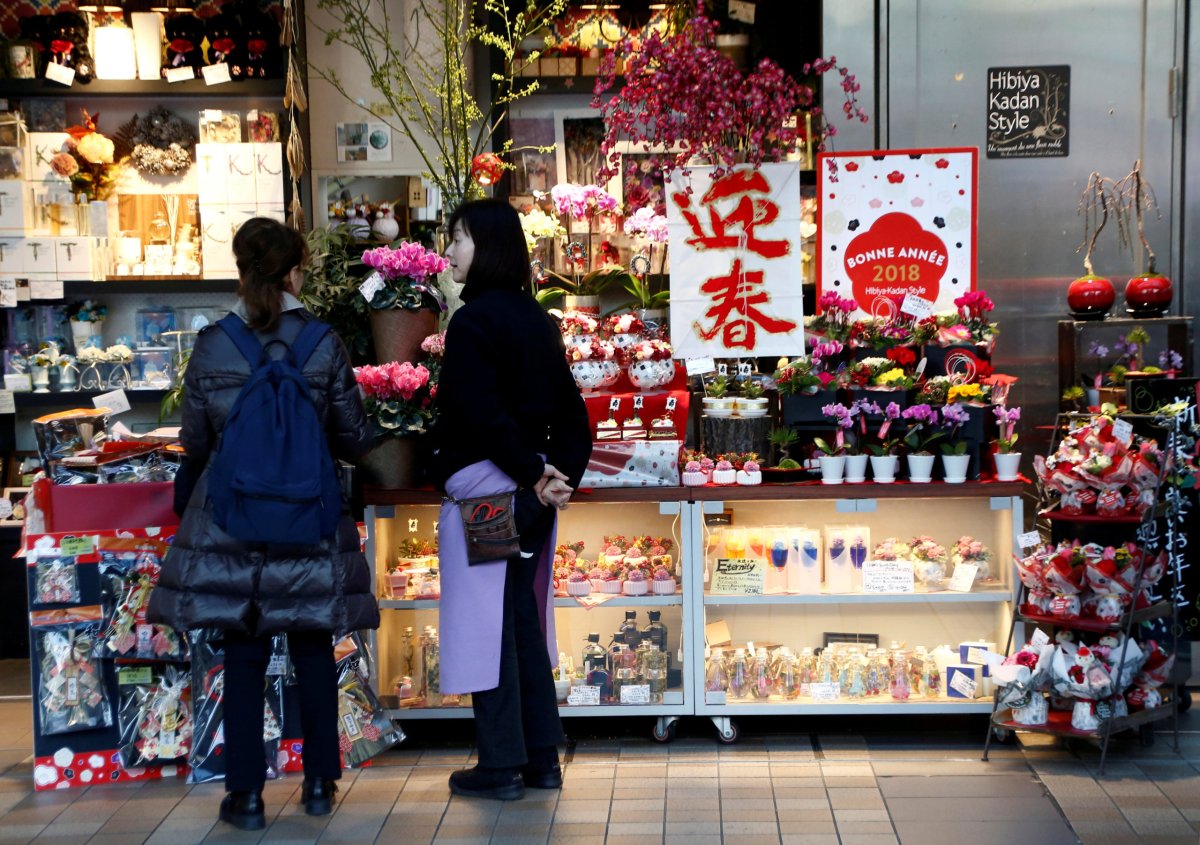By Leika Kihara
TOKYO (Reuters) – Japan’s core consumer inflation was steady in January from a year earlier in a sign a strengthening economy has yet to prompt companies to raise prices, a challenge policy makers have yet to overcome despite years of massive stimulus.
Subdued inflation has forced the Bank of Japan to maintain ultra-loose policy even as the economic recovery gathers momentum, suggesting it will lag behind its global peers in dialing back its crisis-era stimulus.
A recent Reuters poll showed more than half of Japanese firms do not plan to raise base pay in annual wages talks this year, and the recent market sell-off could give them further excuse to delay pay hikes.
That adds to growing challenges for BOJ Governor Haruhiko Kuroda as he prepares for his second term in April with the central bank – bound by an elusive target – unable to withdraw stimulus even as the cost of prolonged easing rise.
“With wage growth still muted, a marked pick-up in service inflation is not on the cards,” said Marcel Thieliant, senior Japan economist at Capital Economics. “The upshot is that the BOJ’s 2 percent inflation target remains out of reach.”
The nationwide core consumer price index, which includes oil products but excludes volatile fresh food costs, rose 0.9 percent in January from a year earlier, data showed on Friday.
That was roughly in line with private forecasts and matched the pace of gains in the previous two months, due mostly to increases in gasoline and fuel costs.
An index excluding the effect of fresh food and energy – closely watched by the BOJ as a measurement of demand-driven price growth – saw inflation accelerate to 0.4 percent in January from 0.3 percent in the previous month.
Yoshiki Shinke, chief economist at Dai-ichi Life Research Institute, said the results reflect a tug-of-war between firms seeking to increase prices to pass on rising costs, and those wary of doing so for fear of scaring away consumers.
“This balance won’t change for a while, so prices may not rise or fall that much for some time,” he said.
WEAK CONSUMPTION
Japan’s economy expanded at an annualized 0.5 percent in October-December, posting its longest continuous expansion since the 1980s boom, thanks to robust capital spending.
But inflation remains distant from the BOJ’s 2 percent target as companies hold off on raising prices and wages, citing uncertainty over the economic outlook.
While inflation has been absent or tepid in many advanced economies over the last couple of years despite a revival in growth, Japan is only just starting to emerge from nearly two decades of deflation.
Prime Minister Shinzo Abe has been pushing companies to raise wages by 3 percent or more to spur consumer spending, piling pressure on firms to spend their huge cash pile to broaden the benefits of the strengthening economy.
There is scant sign companies will pay heed with recent yen gains threatening to hurt manufacturers’ export-driven profits.
Slow wage growth could put a dampener on consumption, which has failed to show any sustainable gains in recent months. It rose 0.5 percent in October-December, failing to make up for a 0.6 percent slump in the previous quarter.
Some analysts say a recent spike in vegetable and grocery prices, blamed in part to bad weather, may also dent consumption.
Annual overall consumer inflation, which includes volatile fresh food costs, accelerated to 1.4 percent in January from 1.0 percent in December. That was the highest level since July 2014, when stripping away the effect of a 2014 sales tax hike.
Underscoring Japan’s sticky deflationary mindset, major supermarket chain operator Seiyu on Thursday announced plans to cut prices of roughly 500 food items by an average 7 percent.
“There’s a strong chance the recent sharp rise in fresh food prices is hurting consumer sentiment. That’s why the momentum for demand-driven price growth remains weak,” said Takeshi Minami, chief economist at Norinchukin Research Institute.
The road ahead for the BOJ looks rocky. As other central banks head for an exit, the BOJ could struggle to persuade investors it will be in no rush to follow in the footsteps of its overseas peers.
“As we have seen with the euro this year, it is the anticipation of monetary policy swings, not their implementation, that drives markets, and the BOJ has further to swing to achieve normalization than either the United States or the euro,” ING chief Asia economist Robert Carnell said in a research note.
(Editing by Shri Navaratnam)






















